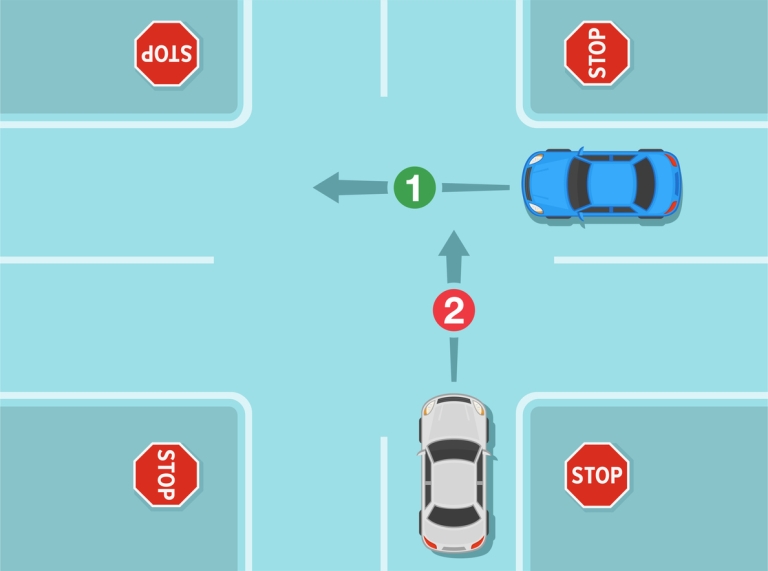
Understanding Right-of-Way: Who Goes First?

Navigating the roads requires more than just knowing how to operate a vehicle. It demands an understanding of the rules that dictate who has the right to proceed first, especially at intersections. This concept, known as the right-of-way, is crucial for ensuring safety on the roads. Let's delve into the intricacies of right-of-way and understand its significance.
The Basics of Right-of-Way
Trains Always Have the Right of Way: No matter the situation, trains always have the right of way due to their size and inability to stop quickly.
First to Stop = First to Go: The vehicle that arrives at the intersection first has the right to proceed first.
Farthest Right Goes First: If two vehicles reach the intersection simultaneously, the one on the right has the right-of-way.
Straight Traffic Goes First: If two vehicles are directly opposite each other and one intends to turn left, the vehicle going straight has the right-of-way.
When in Doubt, Bail Out: Safety is paramount. Even if you have the right-of-way, if you feel unsafe or unsure, it's best to let the other vehicle proceed.
Cyclists and Right-of-Way
Cyclists, much like motorists, are expected to follow the same rules. However, there are nuances. For instance, when a car and a bicycle approach an intersection simultaneously and both intend to go straight, both should stop, check for traffic, and then proceed together. The dynamics change slightly when turns are involved.
Deciphering Intersection Scenarios
Intersections can be complex, with varying rules based on the number of stop signs, the direction of vehicles, and the presence of turn signals. The NHTSA worksheet provides illustrative scenarios to help drivers and cyclists understand right-of-way in different situations. For instance, in a scenario with a car and a bicycle both going straight, both should stop and then proceed together. However, if a car is turning left and a bicycle is going straight, the bicycle has the right-of-way.
The Complexity of Left Turns
Left turns are inherently challenging. In California, the general rule for left turns is that the driver must wait until all oncoming traffic has cleared. This becomes particularly crucial at intersections with traffic signals. Sometimes, there might be a dedicated left-turn signal, while at other times, drivers might encounter a "left turn yield on green" sign, indicating they must wait for a safe gap in oncoming traffic.
Understanding the right-of-way is essential for the safety of all road users, be it drivers, cyclists, or pedestrians. By being aware of the rules and always prioritizing safety, we can ensure smoother and safer journeys for everyone on the road.
